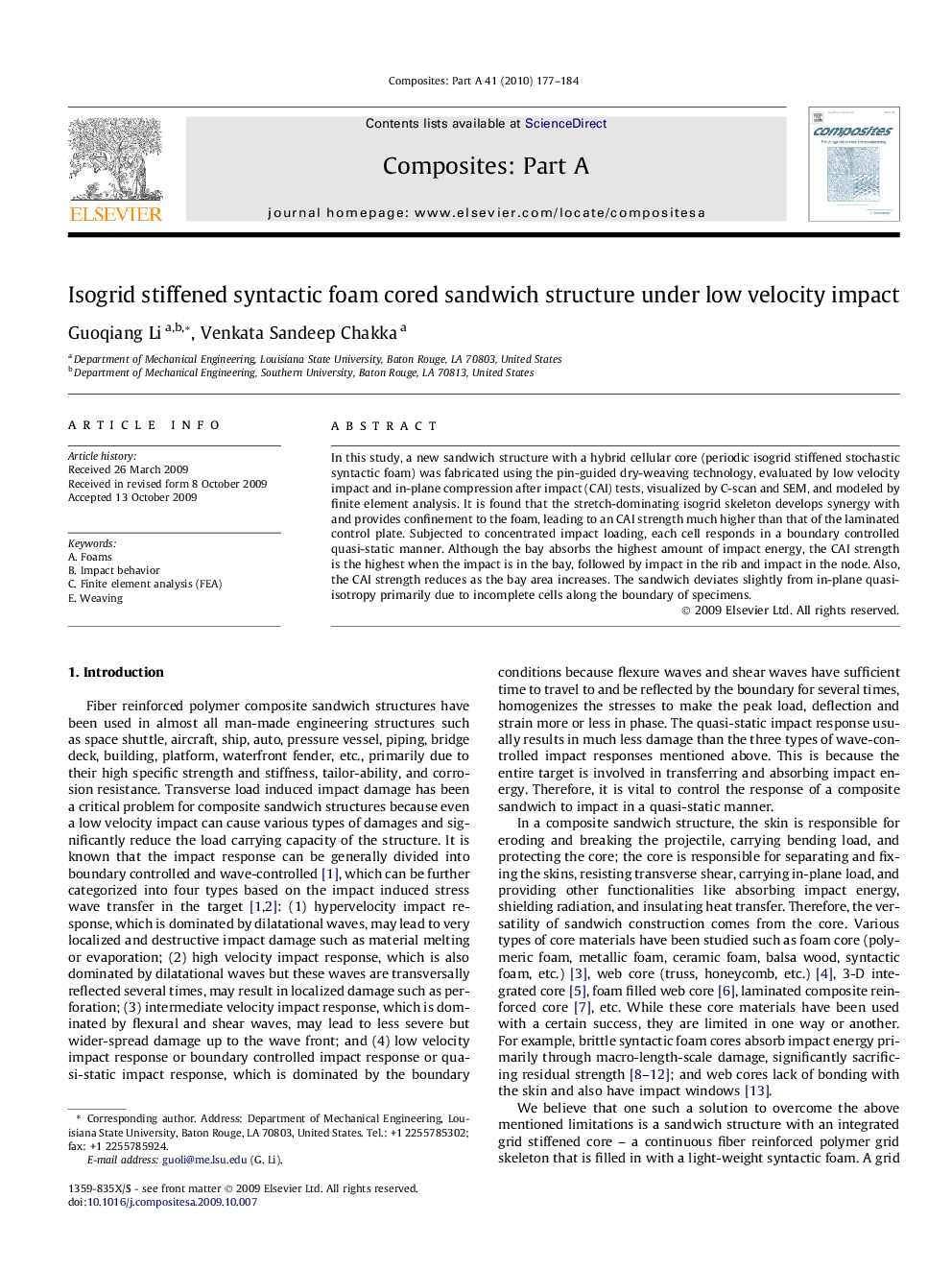| کد مقاله | کد نشریه | سال انتشار | مقاله انگلیسی | نسخه تمام متن |
|---|---|---|---|---|
| 1467091 | 990087 | 2010 | 8 صفحه PDF | دانلود رایگان |

In this study, a new sandwich structure with a hybrid cellular core (periodic isogrid stiffened stochastic syntactic foam) was fabricated using the pin-guided dry-weaving technology, evaluated by low velocity impact and in-plane compression after impact (CAI) tests, visualized by C-scan and SEM, and modeled by finite element analysis. It is found that the stretch-dominating isogrid skeleton develops synergy with and provides confinement to the foam, leading to an CAI strength much higher than that of the laminated control plate. Subjected to concentrated impact loading, each cell responds in a boundary controlled quasi-static manner. Although the bay absorbs the highest amount of impact energy, the CAI strength is the highest when the impact is in the bay, followed by impact in the rib and impact in the node. Also, the CAI strength reduces as the bay area increases. The sandwich deviates slightly from in-plane quasi-isotropy primarily due to incomplete cells along the boundary of specimens.
Journal: Composites Part A: Applied Science and Manufacturing - Volume 41, Issue 1, January 2010, Pages 177–184